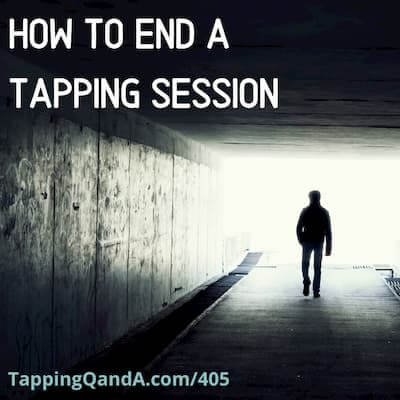Thanks for taking part in the November 30-Day Tapping Challenge!
Don’t forget to sign up to receive daily reminders so that you don’t miss a day of tapping.
If you liked today's video, please share it with a friend.
Thanks for taking part in the November 30-Day Tapping Challenge!
Don’t forget to sign up to receive daily reminders so that you don’t miss a day of tapping.
If you liked today's video, please share it with a friend.
Thanks for taking part in the November 30-Day Tapping Challenge!
Don’t forget to sign up to receive daily reminders so that you don’t miss a day of tapping.
If you liked today's video, please share it with a friend.
 There is no shortage of pain or struggle in the world. Because of this, at any given moment any number of our loved ones can be suffering in big and small ways.
There is no shortage of pain or struggle in the world. Because of this, at any given moment any number of our loved ones can be suffering in big and small ways.
When our loved ones are in pain, we really want to ease their burden, but just because that is our intention doesn't mean that there are tangible actions we can take to be helpful.
In this week's podcast I have a simple tap-along and script that you can use when your loved ones are struggling.
I am not naive enough to believe that tapping for a struggling loved one will completely transform their world. I do know that if I take a few moments to tap for them, I will be more present to their difficulties, meaning I will be more thoughtful in the moment in how I respond. ALSO, I believe that spending a few moments thinking loving thoughts for a friend in pain is a good investment of my time.
You can find the full tapping script as a pdf of this audio over at Tapping Q and A Podcast Scripts and Transcripts.
Subscribe in: Apple | iPhone | Android | Google | Spotify | Pandora
Thanks for taking part in the November 30-Day Tapping Challenge!
Don’t forget to sign up to receive daily reminders so that you don’t miss a day of tapping.
If you liked today's video, please share it with a friend.
 How we end a tapping session is sometimes more important than how we begin it. At the beginning it is most important that we simply start tapping. With each successive round of tapping, we gain clarity about the issue at hand and where we should focus our efforts.
How we end a tapping session is sometimes more important than how we begin it. At the beginning it is most important that we simply start tapping. With each successive round of tapping, we gain clarity about the issue at hand and where we should focus our efforts.
For me, there are two goals for the last little bit of tapping at the end of a session.
First, I often feel a little groggy and fuzzy brained when I've been tapping for a while, which makes sense as tapping often releases a lot of stored emotion and memories. It is important that I'm able to return to my day feeling calm and grounded.
Second, even though we have stopped tapping doesn't mean the process of healing and transformation has ended. The new thoughts and beliefs we've connected with are still integrating even after the tapping stops. At the end of the session, I find it useful to remind myself that the process of healing and transformation will continue after a session. This recognition encourages me to come back and tap again and again.
By taking a few minutes to tap in this way, we can get the most out of our tapping sessions and also set ourselves up for success after the session.
You can find the full tapping script as a pdf of this audio over at Tapping Q and A Podcast Scripts and Transcripts.
Subscribe in: Apple | iPhone | Android | Google | Spotify | Pandora
Thanks for taking part in the November 30-Day Tapping Challenge!
Don’t forget to sign up to receive daily reminders so that you don’t miss a day of tapping.
If you liked today's video, please share it with a friend.
Thanks for taking part in the November 30-Day Tapping Challenge!
Don’t forget to sign up to receive daily reminders so that you don’t miss a day of tapping.
If you liked today's video, please share it with a friend.
Thanks for taking part in the November 30-Day Tapping Challenge!
Don’t forget to sign up to receive daily reminders so that you don’t miss a day of tapping.
If you liked today's video, please share it with a friend.
Thanks for taking part in the November 30-Day Tapping Challenge!
Don’t forget to sign up to receive daily reminders so that you don’t miss a day of tapping.
If you liked today's video, please share it with a friend.
Thanks for taking part in the November 30-Day Tapping Challenge!
Don’t forget to sign up to receive daily reminders so that you don’t miss a day of tapping.
If you liked today's video, please share it with a friend.
 On October 20th I received the sad news that Dr. Pat Carrington had passed away the day before at the age of 95.
On October 20th I received the sad news that Dr. Pat Carrington had passed away the day before at the age of 95.
In the tapping world Pat was best known for creating the Choices Method and was one of the Founding EFT Masters.
On a personal level, she was an amazing champion of my work and I know I wouldn't have the career that I have today if it weren't for her public support.
When someone we love and care about dies, it is emotionally hard. It is natural to feel grief and loss, but sometimes these emotions can be too much.
This week I have for you a tap-along audio and tapping script to help in times of grief and loss.
Learn more about Dr. Carrington's life and work
You can find the full tapping script as a pdf of this audio over at Tapping Q and A Podcast Scripts and Transcripts.
Subscribe in: Apple | iPhone | Android | Google | Spotify | Pandora
Thanks for taking part in the November 30-Day Tapping Challenge!
Don’t forget to sign up to receive daily reminders so that you don’t miss a day of tapping.
If you liked today's video, please share it with a friend.
Thanks for taking part in the November 30-Day Tapping Challenge! If you liked today's video, please share it with a friend.
Don’t forget to sign up to receive daily reminders so that you don’t miss a day of tapping.
Thanks for taking part in the November 30-Day Tapping Challenge! If you liked today's video, please share it with a friend.
Don’t forget to sign up to receive daily reminders so that you don’t miss a day of tapping.
 Today it is commonly acknowledged that cultivating a sense of gratitude can be a powerful tool for helping us to live better and emotionally healthier lives. So much so that I even have clients who try to find their way to feeling a sense of gratitude when struggling with an emotional issue. My clients regularly tell me things like, “I spent some time this morning doing gratitude exercises to try to change my mindset.”
Today it is commonly acknowledged that cultivating a sense of gratitude can be a powerful tool for helping us to live better and emotionally healthier lives. So much so that I even have clients who try to find their way to feeling a sense of gratitude when struggling with an emotional issue. My clients regularly tell me things like, “I spent some time this morning doing gratitude exercises to try to change my mindset.”
Unfortunately, simply saying that you feel thankful is not enough to turn around an emotional issue. In this week's podcast I share with you the difference between the feelings of gratitude and poverty. When I use the word “poverty” in this context I'm not talking specifically about a lack of money, but rather feeling like we don't have enough of anything. We can feel a poverty of support, opportunity, love, health, or just about anything else.
When we understand the difference between the emotions of gratitude and poverty, we can use this understanding in our personal transformation work.
Subscribe in: Apple | iPhone | Android | Google | Spotify | Pandora
Thanks for taking part in the November 30-Day Tapping Challenge! If you liked today's video, please share it with a friend.
Don’t forget to sign up to receive daily reminders so that you don’t miss a day of tapping.
Thanks for taking part in the November 30-Day Tapping Challenge! If you liked today's video, please share it with a friend.
Don’t forget to sign up to receive daily reminders so that you don’t miss a day of tapping.
Thanks for taking part in the November 30-Day Tapping Challenge! If you liked today's video, please share it with a friend.
Don’t forget to sign up to receive daily reminders so that you don’t miss a day of tapping.
Thanks for taking part in the November 30-Day Tapping Challenge! If you liked today's video, please share it with a friend.
Don’t forget to sign up to receive daily reminders so that you don’t miss a day of tapping.
Thanks for taking part in the November 30-Day Tapping Challenge! If you liked today's video, please share it with a friend.
Don’t forget to sign up to receive daily reminders so that you don’t miss a day of tapping.